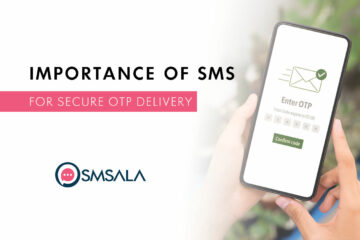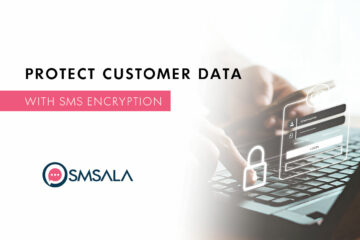In today’s fast-paced digital world, businesses rely heavily on SMS marketing to connect with their customers quickly and effectively. With open rates as high as 98%, SMS is one of the most direct and impactful ways to communicate with an audience. But not all SMS routes are created equal. For companies looking to maximize the benefits of their SMS marketing campaigns, using white routes is a must.
This article will explore the benefits of using white routes in SMS marketing, explain the differences between white and grey routes, and guide you on how to choose the best sms provider to ensure compliance, reliability, and high deliverability rates for your campaigns.
What Are White Routes in SMS Marketing?
Before diving into the advantages, it’s essential to understand what white routes are in SMS marketing. In the world of telecommunications, SMS messages can travel through different pathways, known as routes. These routes can be categorized into three types:
- White Routes: These are legitimate, licensed routes that are approved by mobile network operators (MNOs). Messages sent via white routes follow all the necessary regulations and have the highest delivery success rates because they pass through official channels.
- Grey Routes: These are unauthorized, unlicensed pathways that bypass legitimate routes. While they may be cheaper, they come with the risk of being blocked, resulting in undelivered messages.
- Black Routes: These are illegal routes that involve fraud, often resulting in messages never reaching the recipient.
By opting for white routes, businesses can ensure that their SMS campaigns are not only compliant with regulations but also achieve higher deliverability and credibility with their audience.
Key Benefits of Using White Routes in SMS Marketing
The decision to use white routes for your SMS marketing campaigns can provide several key advantages. Let’s explore the most significant benefits in detail.
1. Enhanced Deliverability
One of the biggest benefits of using white routes is enhanced deliverability. Since white routes are approved and monitored by mobile network operators, messages sent through these channels are much more likely to reach their intended recipients.
Grey routes, on the other hand, often get flagged by carriers as suspicious, which can result in messages being blocked or delayed. In an era where customers expect instant communication, a delayed or undelivered SMS can lead to missed opportunities, lower engagement, and lost sales.
Example: A retail business running a flash sale campaign can ensure that time-sensitive promotional messages are delivered immediately to all customers when sent through white routes.
2. Legal Compliance
In today’s regulatory landscape, compliance is crucial. Many regions, including the European Union (GDPR) and the United States (TCPA), have strict laws governing the use of SMS for marketing purposes. These regulations are designed to protect consumer privacy and prevent spam or unsolicited messages.
Using white routes ensures that your business remains compliant with these regulations, avoiding potential fines and legal complications. Grey routes, however, often bypass these rules, leaving businesses vulnerable to legal actions.
Tip: Always work with an SMS provider that uses white routes to ensure your messages comply with local laws and regulations.
3. Reduced Risk of Spam Blocking
One of the major challenges in SMS marketing is ensuring that your messages are not flagged as spam. Messages sent via grey or black routes are often flagged by carriers due to their unauthorized nature, resulting in spam blocking.
With white routes, your messages are sent through trusted, authorized channels, reducing the likelihood of being flagged as spam. This ensures higher open rates and better engagement from your audience, as they are more likely to trust the source of the message.
4. Improved Message Quality
When using grey or black routes, there is often a risk of message degradation. This means that the content of your message may be altered or delayed, impacting the overall effectiveness of your SMS marketing campaign.
White routes guarantee that your message is delivered in its original form, without any alterations, ensuring that the recipient receives exactly what you intended to send. This is especially critical when sending time-sensitive offers, OTP (One-Time Passwords), or important notifications.
How White Routes Improve SMS Campaign Performance
Using white routes not only enhances deliverability and compliance but also significantly boosts the overall performance of your SMS campaigns. Here’s how:
1. Higher Open and Response Rates
With the 98% open rate of SMS, businesses already enjoy strong engagement. However, white routes can elevate these numbers even further by ensuring that messages reach their destination without delays or disruptions. Customers are more likely to open and respond to messages that arrive on time and from trusted sources.
Actionable Tip: Use white routes to send time-sensitive promotions, such as flash sales or limited-time offers, to drive immediate action and maximize response rates.
2. Increased Customer Trust and Satisfaction
Customers today are highly aware of spam and phishing attempts. Receiving a message from a legitimate, operator-approved source builds trust and ensures that your audience feels secure engaging with your brand. This trust translates into higher engagement, customer loyalty, and repeat business.
For instance, banks and financial institutions often use white routes to deliver OTP messages and other sensitive information, ensuring their customers receive secure and reliable communication.
3. Seamless Integration with CRM and Automation Tools
White routes integrate seamlessly with CRM systems and automation tools, allowing businesses to send personalized, automated SMS messages at scale. This is essential for delivering targeted messages based on customer behavior, such as reminders, personalized offers, or follow-up messages.
By using white routes, you ensure that these automated campaigns are delivered without interruptions, providing a smooth and reliable experience for your customers.
White Routes vs. Grey Routes: Understanding the Difference
One of the most common questions businesses face is whether to choose white routes or grey routes for their SMS marketing campaigns. To make an informed decision, it’s important to understand the fundamental differences between the two.
Grey Routes: Cheaper but Riskier
Grey routes are often chosen because they are cheaper than white routes. However, the lower cost comes with significant risks:
- Unreliable Deliverability: Messages sent via grey routes may not always reach their recipients, or they may be delayed, impacting campaign success.
- Legal and Compliance Risks: Grey routes often bypass regulations, exposing businesses to fines or legal consequences.
- Spam Filtering: Because grey routes are unauthorized, carriers are more likely to filter these messages as spam.
White Routes: Reliable and Compliant
White routes may come with a higher upfront cost, but the benefits far outweigh the risks of grey routes:
- Guaranteed Deliverability: White routes ensure messages are delivered quickly and reliably.
- Compliance: Using white routes helps businesses adhere to national and international laws, protecting them from legal risks.
- Brand Trust: White routes build customer trust by ensuring messages come from a legitimate and trusted source.
In short, while grey routes might seem like a cost-effective option in the short term, they often lead to lost revenue and reputational damage in the long run. White routes offer a safer, more reliable, and more effective solution for businesses serious about their SMS marketing.
Compliance and Regulation:
As SMS marketing grows in popularity, so does the scrutiny around data privacy and consumer protection. Countries across the globe have implemented strict regulations that govern how businesses can use SMS for marketing purposes.
Key Regulations for SMS Marketing:
- General Data Protection Regulation (GDPR): In the European Union, the GDPR requires businesses to obtain explicit consent from individuals before sending marketing messages. Non-compliance can result in hefty fines.
- Telephone Consumer Protection Act (TCPA): In the United States, the TCPA requires businesses to have prior consent before sending SMS marketing messages to customers. Violations can lead to lawsuits and financial penalties.
By using white routes, businesses ensure they are adhering to these regulations. Since white routes are authorized by mobile network operators, they provide a legitimate, compliant way to send messages to consumers.
Choosing the Right SMS Provider for White Routes
Choosing the right SMS provider is crucial for ensuring the success of your SMS marketing campaigns. Here’s what to look for when selecting a provider that supports white routes:
1. Direct Carrier Connections
A reliable SMS provider should have direct connections with mobile network operators, ensuring messages are sent through official channels. This is a key indicator that the provider uses white routes and can deliver messages with high reliability.
2. Compliance Expertise
Ensure that your provider has expertise in compliance with national and international regulations such as GDPR, TCPA, and CAN-SPAM. They should offer guidance on how to run compliant SMS marketing campaigns and provide opt-out mechanisms for recipients.
3. High Deliverability Rates
One of the most important metrics for an SMS provider is their deliverability rate. Providers that use white routes can guarantee higher deliverability rates because they send messages through legitimate, authorized channels.
4. Reporting and Analytics Tools
Your SMS provider should offer detailed reporting and analytics tools so you can track the performance of your campaigns. Metrics like delivery rates, open rates, and response rates are crucial for understanding how effective your SMS marketing efforts are.
FAQs About Using White Routes in SMS Marketing
1. What are white routes in SMS marketing?
White routes are legitimate, licensed pathways for sending SMS messages, approved by mobile network operators to ensure reliable delivery and compliance with regulations.
2. How do white routes improve SMS deliverability?
White routes ensure that messages are sent through authorized, trusted channels, reducing the likelihood of messages being blocked or delayed, thus improving deliverability rates.
3. Are white routes more expensive than grey routes?
Yes, white routes are generally more expensive than grey routes. However, they provide better deliverability, compliance, and protection against legal risks, which can save businesses money in the long run.
4. What are the legal implications of using grey routes in SMS marketing?
Using grey routes can expose your business to legal risks such as fines or lawsuits, as grey routes often bypass regulations. White routes, on the other hand, ensure compliance with national and international laws.
5. Can I switch from grey routes to white routes for my SMS campaigns?
Yes, many businesses transition from grey routes to white routes to improve deliverability and ensure compliance. Speak with your SMS provider about upgrading to white routes.
Conclusion:
As businesses continue to invest in SMS marketing, ensuring the success of campaigns requires more than just crafting the perfect message. Using white routes offers unparalleled benefits, including higher deliverability, legal compliance, and improved customer trust. While grey routes may seem like a cost-effective solution, the risks they pose in terms of deliverability, spam blocking, and legal issues make white routes the superior choice for businesses serious about long-term success.
Ready to enhance your SMS marketing with white routes? Contact us today to get started with compliant, high-performance SMS delivery that ensures your messages reach your audience every time.




